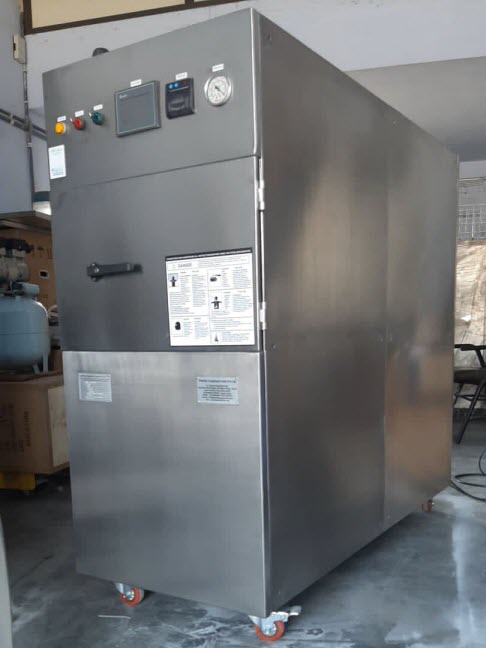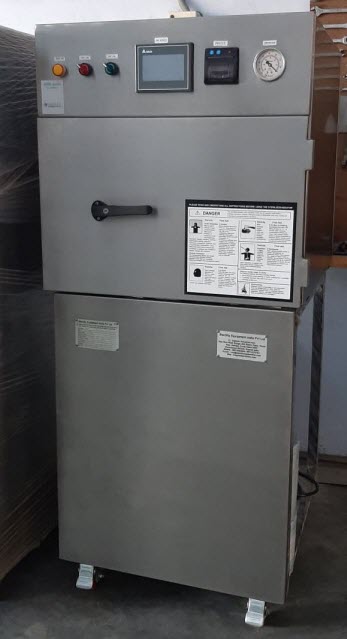Ethylene Oxide (ETO) sterilization is a crucial method for ensuring the safety and sterility of medical devices and equipment. In Brazil, as in many other countries, the operation, maintenance, and safety of ETO sterilization equipment are governed by strict regulatory frameworks and guidelines set by health authorities. This article delves into the regulatory compliance requirements and guidelines established by Brazilian health authorities for the operation and use of ETO sterilizers within the country.
Introduction
In the healthcare industry, maintaining the sterility of medical devices and equipment is paramount to ensure patient safety. ETO sterilization is a widely used method for achieving this, and its proper operation is subject to stringent regulations to guarantee efficacy and safety.
The Importance of Ethylene Oxide Sterilization
ETO sterilization is employed to decontaminate medical devices and equipment that are sensitive to high temperatures and moisture. It is particularly effective in ensuring the elimination of microorganisms, including bacteria, viruses, and spores, from these items.
Regulatory Framework for ETO Sterilizers in Brazil
National Health Surveillance Agency (ANVISA)
The National Health Surveillance Agency (ANVISA) is the regulatory body responsible for overseeing and regulating medical devices, equipment, and health-related processes in Brazil. ANVISA plays a critical role in establishing guidelines for ETO sterilization operations.
Technical Regulations and Norms
ANVISA establishes technical regulations and norms that dictate the requirements for the operation, maintenance, and safety of ETO sterilizers. These regulations cover various aspects, including facility design, equipment installation, sterilization process validation, safety standards, and personnel training.

Compliance Requirements for ETO Sterilization Facilities
Licensing and Authorization
ETO sterilization facilities in Brazil must obtain proper licensing and authorization from ANVISA before commencing operations. This includes submitting detailed documentation about the facility’s layout, equipment, and sterilization processes.
Equipment Design and Installation
The design, installation, and operation of ETO sterilization equipment must adhere to ANVISA’s technical regulations. Equipment must be designed to ensure proper sterilization, efficient gas diffusion, and safety for both operators and patients.
Sterilization Process Validation
ETO sterilization processes must undergo rigorous validation to ensure their effectiveness in eliminating microorganisms without compromising the integrity of the sterilized items. Validation studies must demonstrate consistent and reliable results.

Safety Standards and Precautions
Emission Control and Environmental Impact
ANVISA regulations mandate the implementation of emission control measures to minimize the release of ETO gas into the environment. This includes maintaining emission levels within permissible limits to prevent potential harm to both the environment and nearby communities.
Occupational Health and Safety
Guidelines set by ANVISA also focus on ensuring the occupational health and safety of personnel working with ETO sterilization equipment. Facilities must provide appropriate personal protective equipment (PPE), training, and education to mitigate potential health risks.
Monitoring and Inspection
Regular Inspections and Audits
ANVISA conducts regular inspections and audits of ETO sterilization facilities to assess compliance with regulations and guidelines. These inspections cover various aspects, including facility design, equipment maintenance, documentation accuracy, and personnel training.
Compliance Reporting and Record-Keeping
Facilities are required to maintain comprehensive records related to sterilization processes, validation studies, maintenance activities, and compliance reports. These records must be readily available for inspection by ANVISA authorities.
Training and Certification
Competency of Personnel
Personnel involved in ETO sterilization operations must possess the necessary knowledge and skills to perform their tasks safely and effectively. ANVISA mandates that only qualified and trained individuals operate and oversee sterilization processes.
Training Programs and Certifications
To meet ANVISA’s requirements, ETO sterilization facilities must establish training programs that cover the proper handling of ETO gas, equipment operation, safety protocols, and emergency procedures. Certification of personnel’s competency is a key aspect of ensuring compliance.
Emerging Trends and Future Developments
As technology and best practices evolve, the regulatory framework for ETO sterilizers in Brazil is likely to adapt accordingly. Emerging trends may include advancements in equipment design, automation of processes, enhanced emission control technologies, and more robust validation methodologies.
Conclusion
Ethylene Oxide sterilization is an indispensable process in the healthcare industry, ensuring the safety and sterility of critical medical devices and equipment. In Brazil, the regulatory framework established by ANVISA ensures that ETO sterilization operations are conducted with the highest standards of safety, efficacy, and environmental responsibility. Adhering to these regulations not only guarantees patient safety but also contributes to the overall quality and credibility of the healthcare system in the country.





